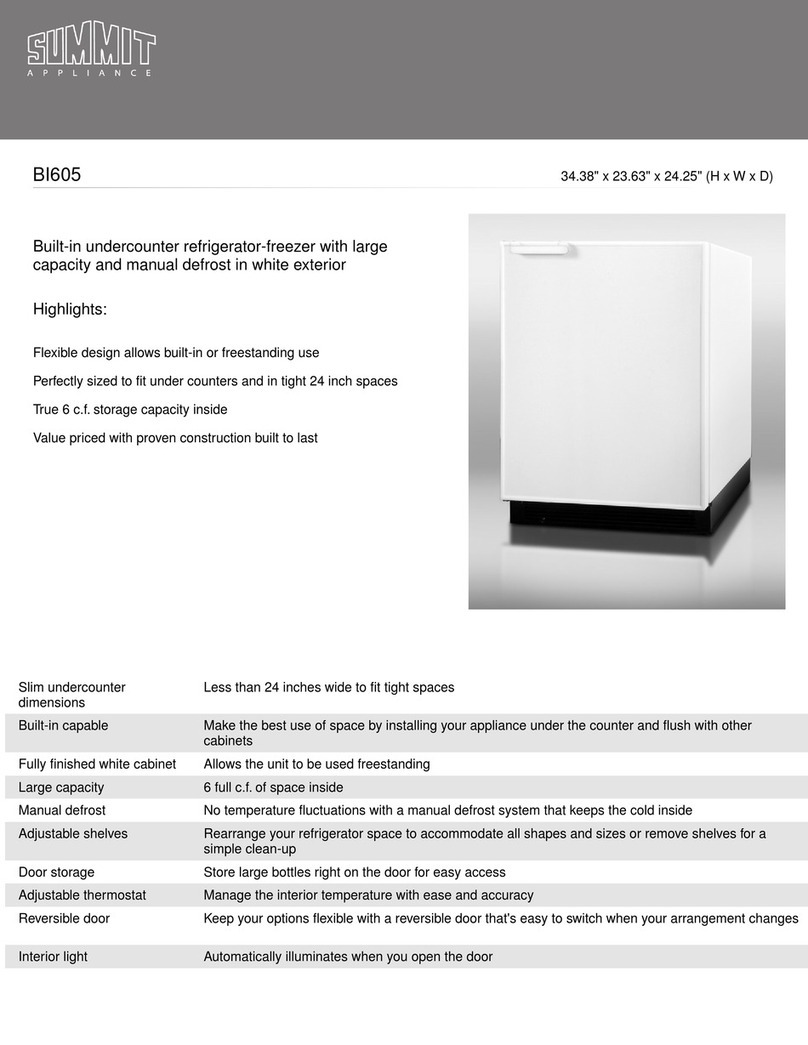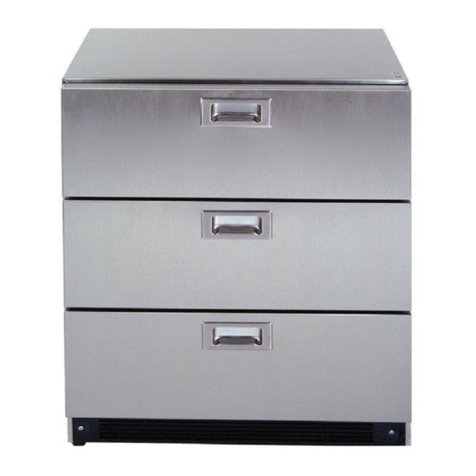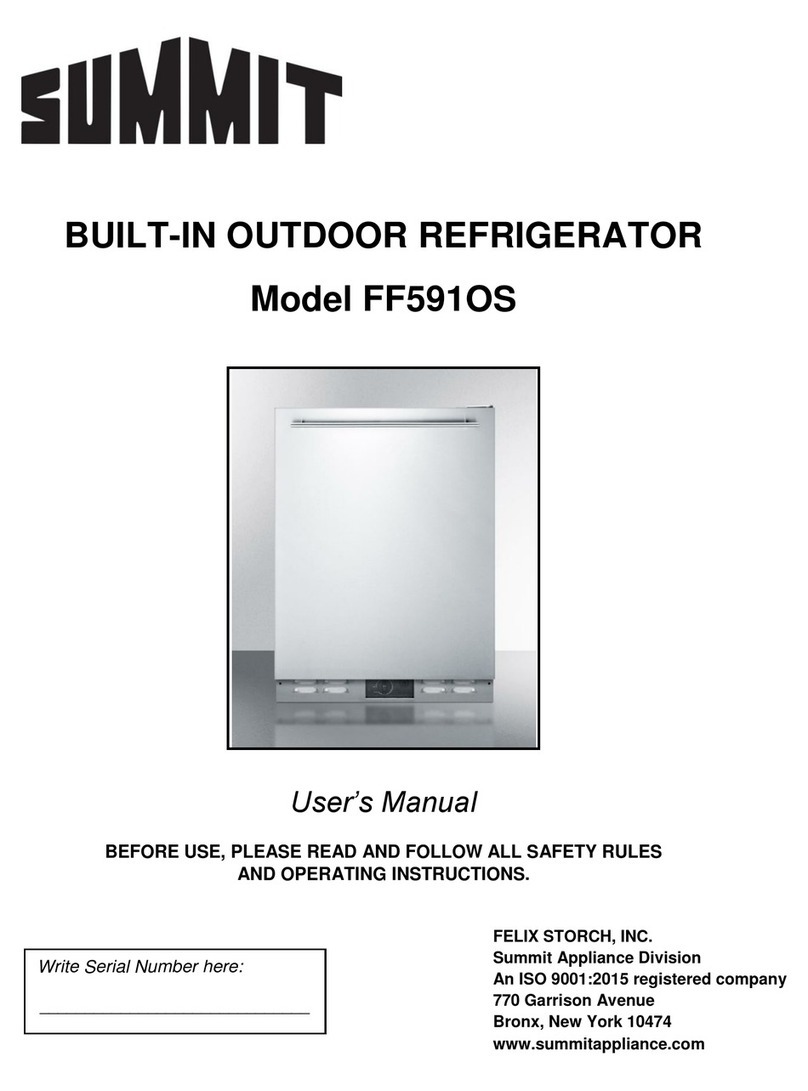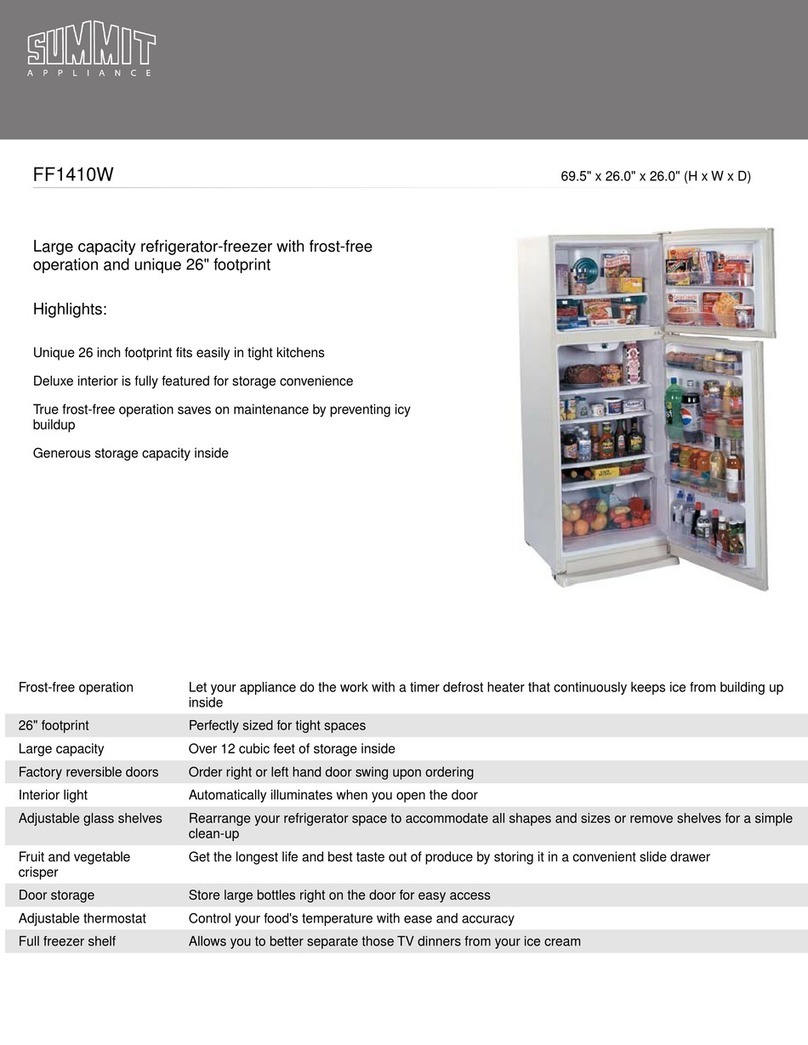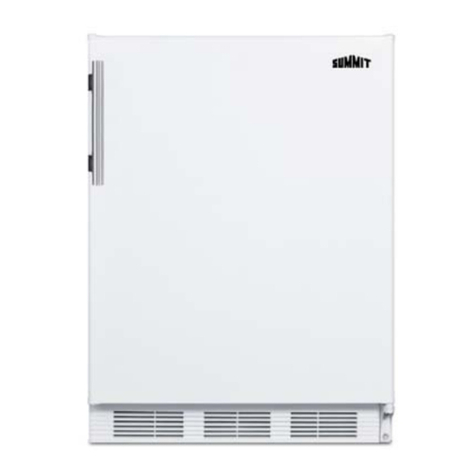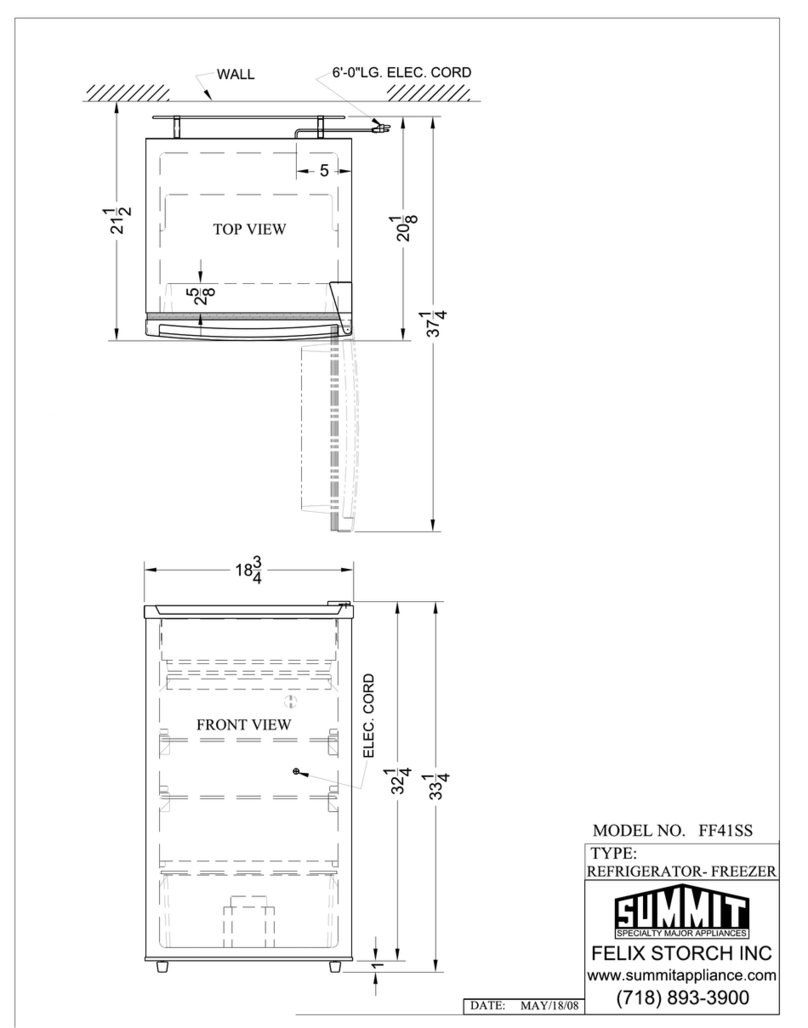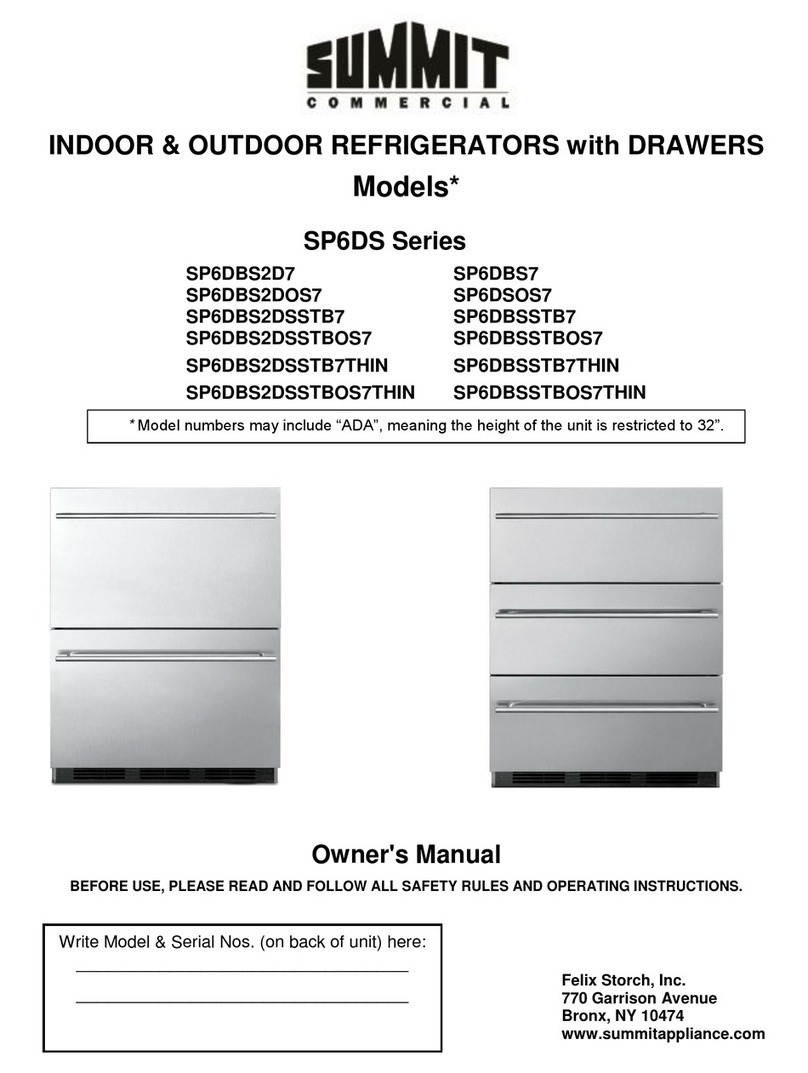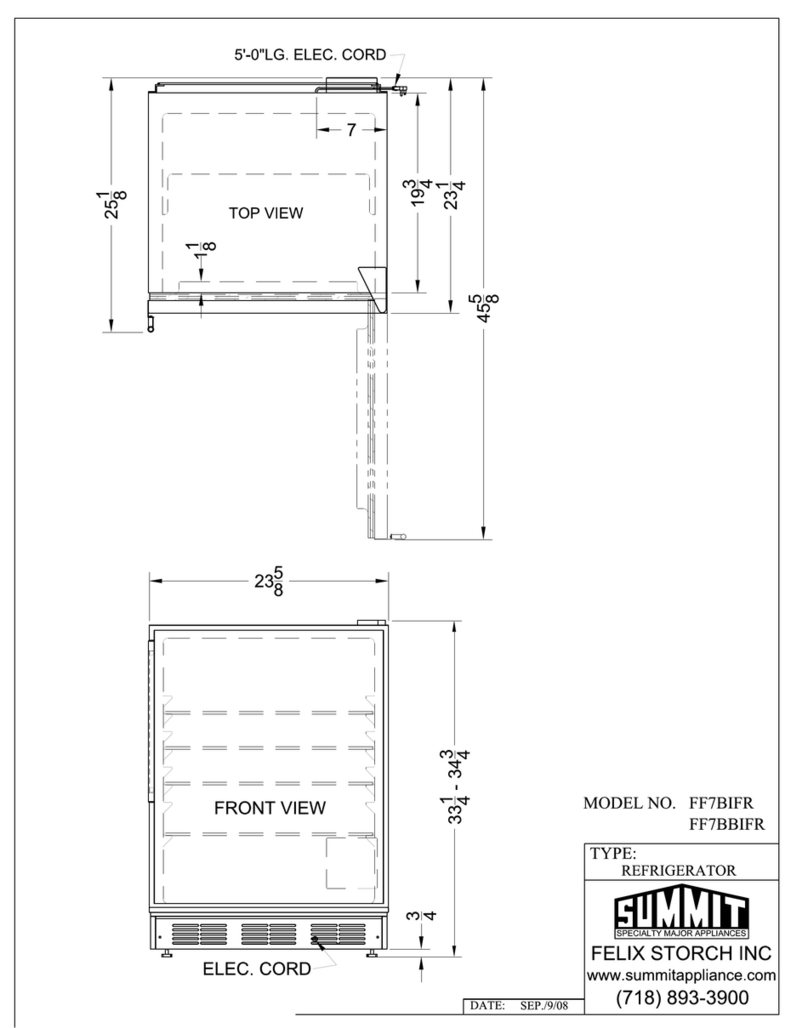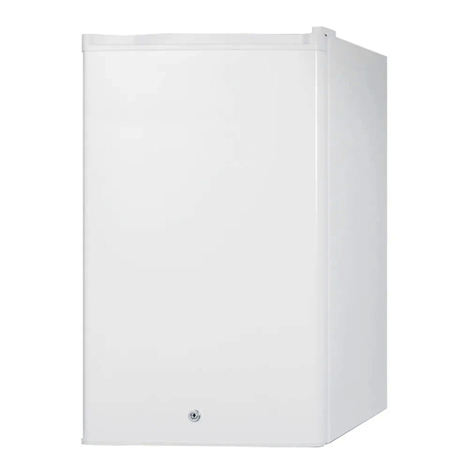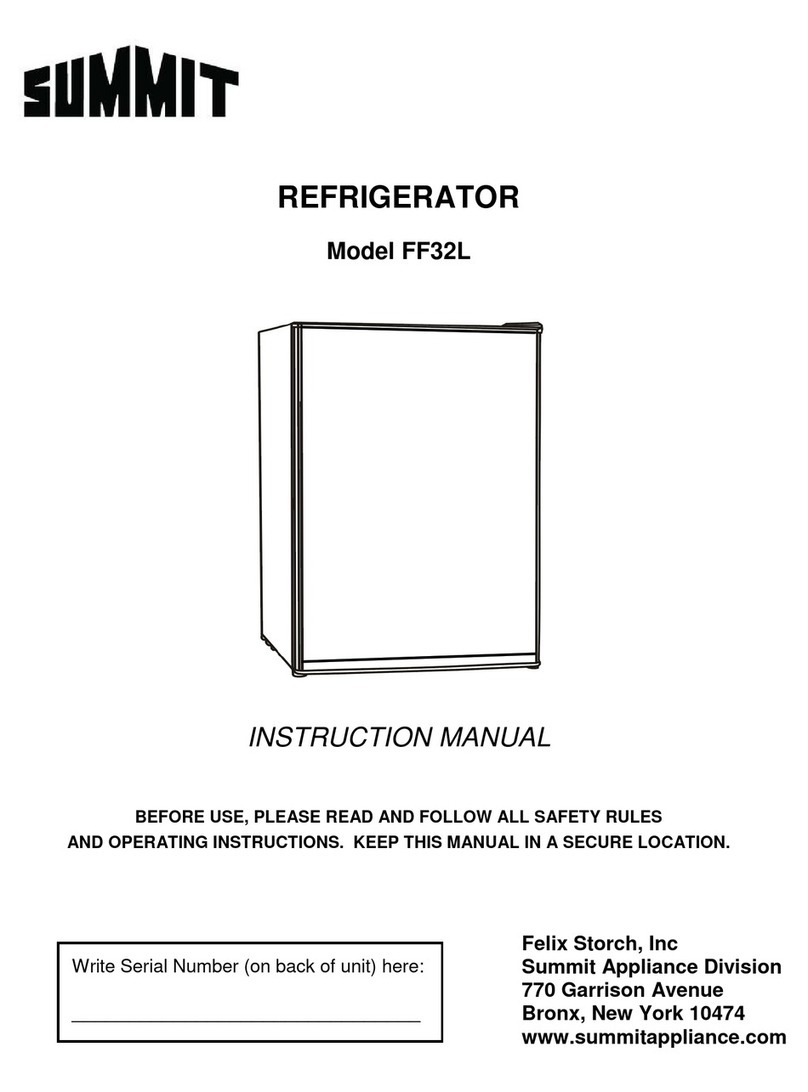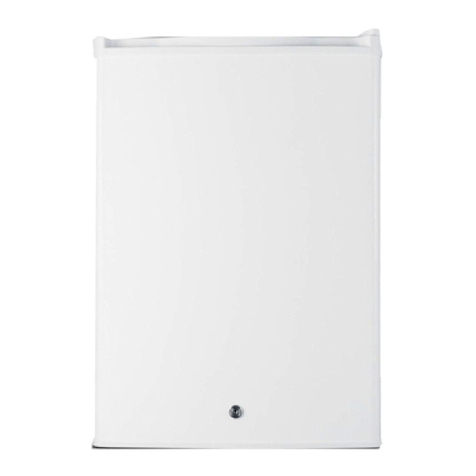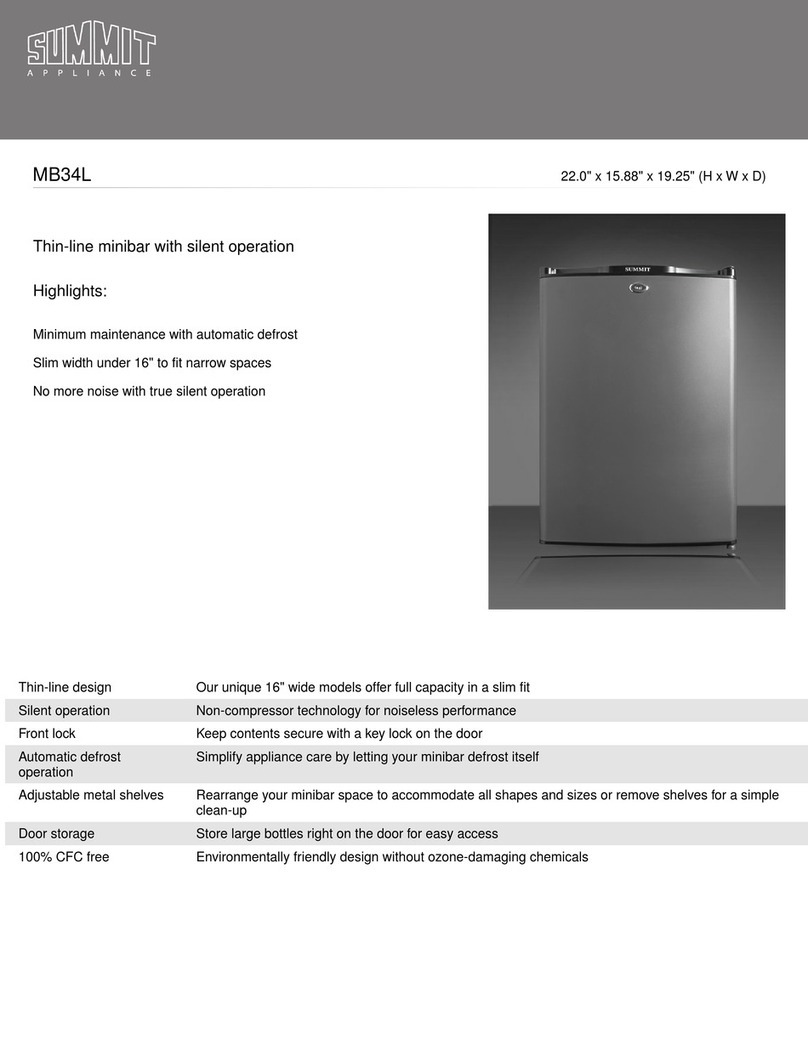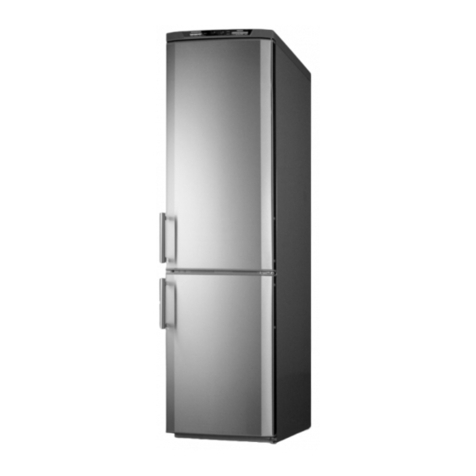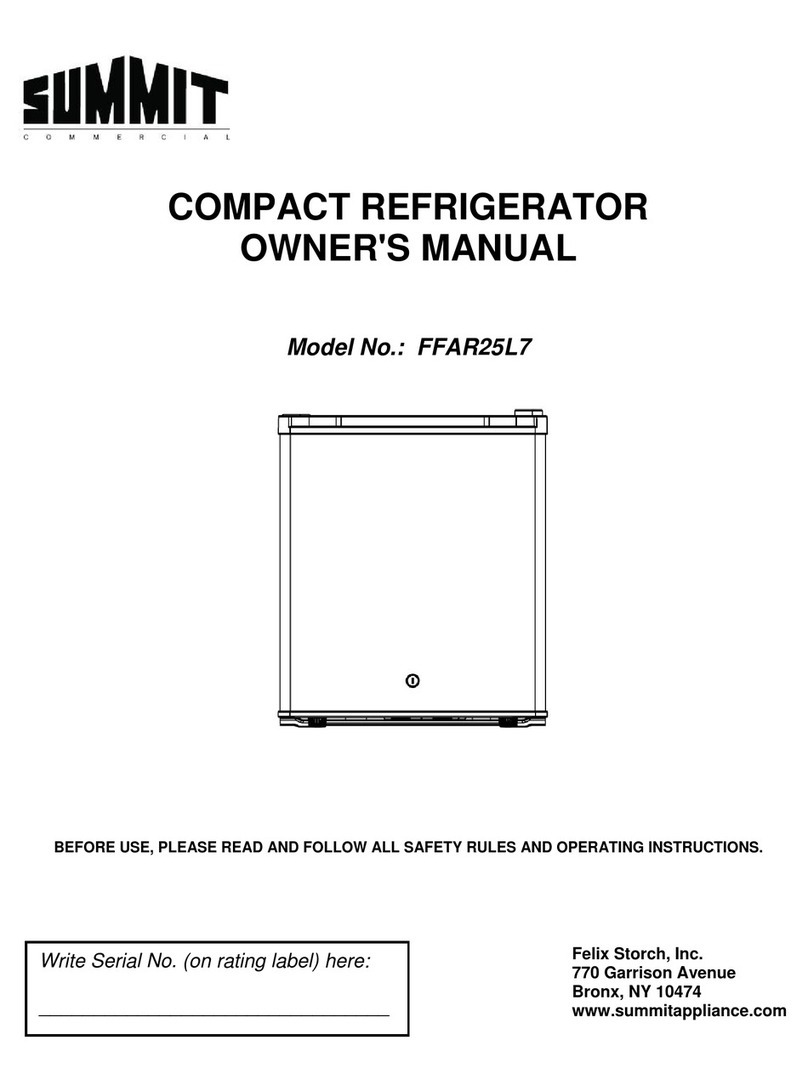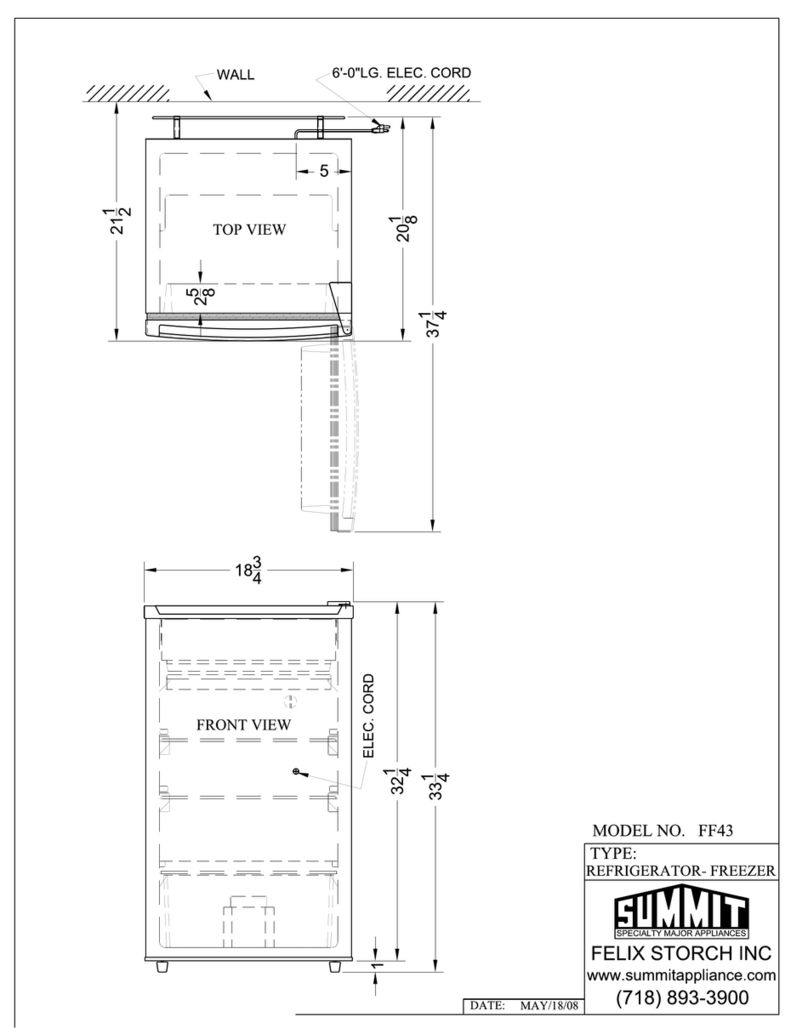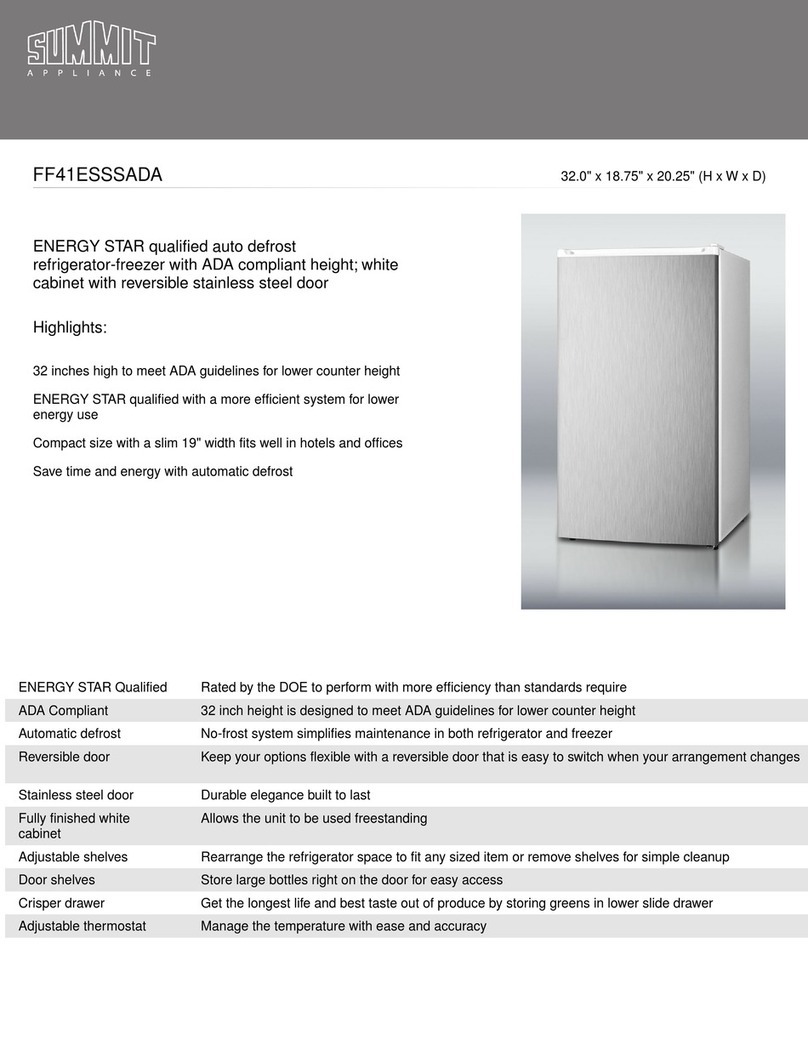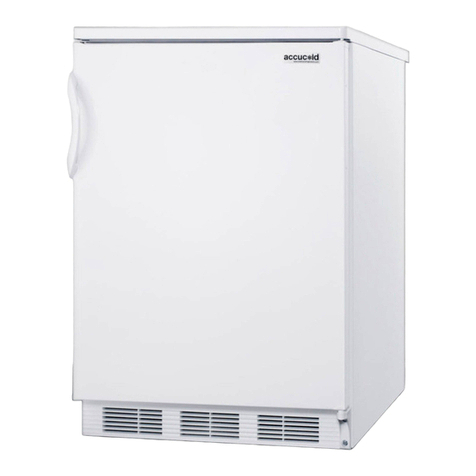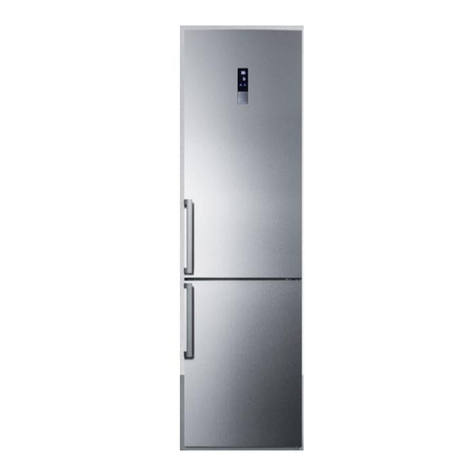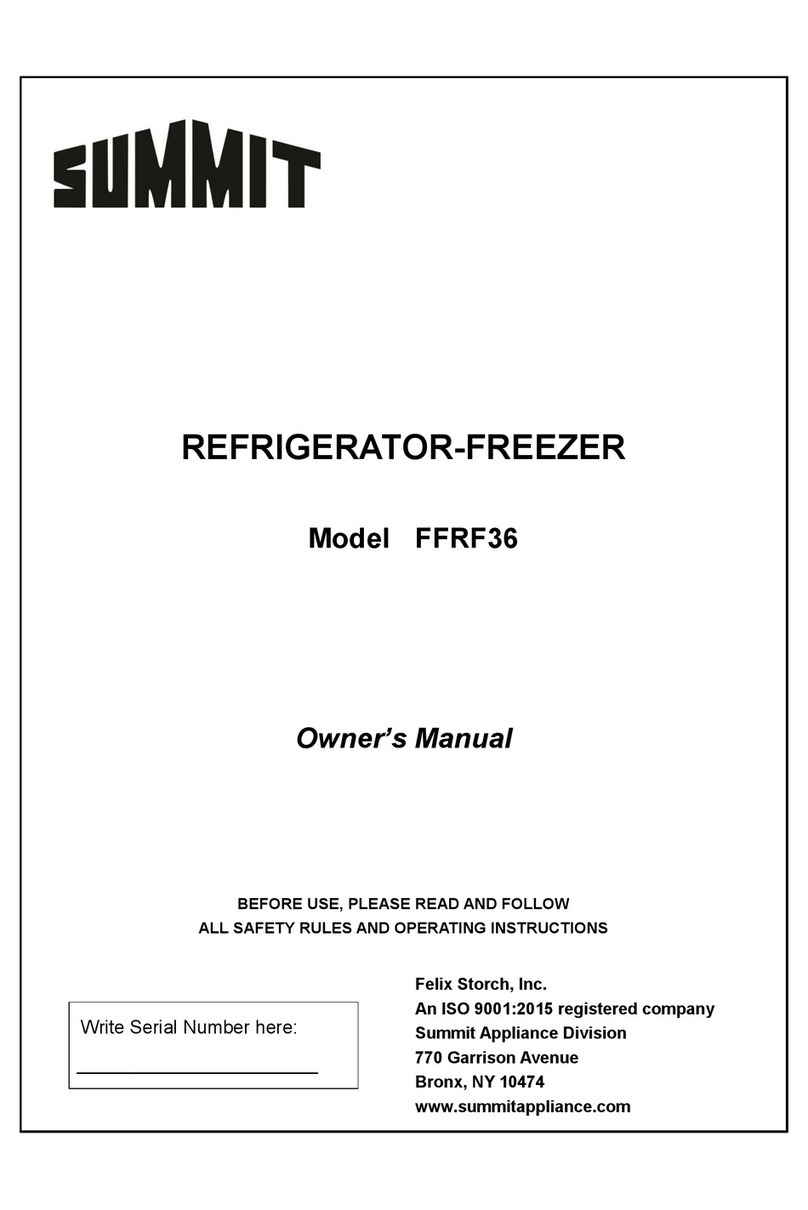2
Before the refrigerator is used, it must be properly positioned and installed as
described in this manual, so read the manual carefully. To reduce the risk of
fire, electrical shock or injury when using the refrigerator, follow basic
precautions, including the following:
•Plug into a grounded 3-prong outlet. Do not remove grounding prong, do not use an adapter, and
do not use an extension cord.
•It is recommended that a separate circuit, serving only your refrigerator, be provided.
•Use receptacles that cannot be turned off by a switch or pull chain.
•Never clean refrigerator parts with flammable fluids. These fumes can create a fire hazard or
explosion. And do not store or use gasoline or other flammable vapors and liquids in the vicinity of
this or any other appliance. The fumes can create a fire hazard or explosion.
•Before proceeding with cleaning and maintenance operations, make sure the power line of the
appliance is disconnected.
•Do not connect or disconnect the electric plug when your hands are wet.
•Unplug the refrigerator or disconnect the power before cleaning or servicing. Failure to do so can
result in electrical shock or death.
•Do not attempt to repair or replace any part of your refrigerator unless it is specifically
recommended in this material. All other servicing should be referred to a qualified technician.
•This appliance is CFC- and HFC-free and contains small quantities of Isobutane (R600a) which is
environmentally friendly, but flammable. It does not damage the ozone layer, nor does it increase
the greenhouse effect. Care must be taken during transportation and setting up of the appliance
that no parts of the cooling system are damaged. Leaking coolant can ignite and may damage the
eyes.
•In the event of any damage:
oAvoid open flames and anything that creates a spark,
oDisconnect from the electrical power line,
oAir the room in which the appliance is located for several minutes, and - Contact the
oService Department for advice.
•The more coolant there is in an appliance, the larger the room it should be installed in. In the
event of a leakage, if the appliance is in a small room, there is the danger of combustible gases
building up. For every ounce of coolant at least 325 cubic feet of room space is required. The
amount of coolant in the appliance is stated on the data plate on the back of the appliance. It is
hazardous for anyone other than an authorized Service Person to carry out servicing or repairs to
this appliance.
•Take serious care when handling, moving, and using the appliance to avoid either damaging the
refrigerant tubing or increasing the risk of a leak.
•Replacing component parts and servicing shall be done by factory authorized service
personnel so as to minimize the risk of possible ignition due to incorrect parts or improper
service.
